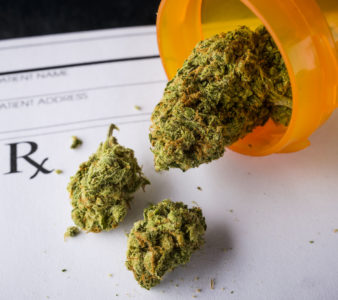 Recreational marijuana became legal in Minnesota on August 1, but many patients with chronic pain were legally seeking out marijuana well before this year. That’s because Minnesota is one of many states that allows for the production, purchase and use of medicinal marijuana.
Recreational marijuana became legal in Minnesota on August 1, but many patients with chronic pain were legally seeking out marijuana well before this year. That’s because Minnesota is one of many states that allows for the production, purchase and use of medicinal marijuana.
Medicinal marijuana has been recommended as a way to relieve symptoms in patients with a variety of conditions. From easing the symptoms of terminal cancer to providing relief for much less serious issues, medicinal marijuana is currently being pursued by tens of thousands of Minnesotans for their health condition. Recently, we learned that the most common reason why a person sought out medicinal marijuana in Minnesota was due to chronic pain.
“By far, chronic pain is what drives our program,” said David Rak, research manager for the Minnesota Department of Health’s Office of Medical Cannabis.
Medicinal Marijuana For Chronic Pain
According to Rak, nearly 60 percent of patients in Minnesota’s medicinal marijuana program cite chronic pain as their reason for enrollment. Currently, 24,270 of the program’s 41,183 participants are seeking treatment for chronic pain.
Researchers are still working to understand exactly why medical marijuana can help relieve symptoms in patients with chronic pain. However, because chronic pain is so unique to the individual, and because there are so many different types of marijuana, it’s not easy to pinpoint why some patients experience relief why others do not. Some researchers believe medicinal marijuana works by triggering the release of certain natural chemicals in the brain that can provide pain relief, while others suggest that medicinal marijuana can help to reduce inflammation and associated discomfort.
Others swear by the benefits of medicinal marijuana for another reason. As we’ve talked about on the blog in the past, healthy sleep is critical for working to overcome a pain condition, and many patients find that medicinal marijuana helps them fall asleep faster and achieve a more restful sleep.
“Sleep is really an important factor, actually,” said Rak. “If you’re sleeping better and you wake up rested, you’re more ready to start the day. You feel stronger.”
Others love that it has helped them transition away from potentially dangerous opioids. A study by the Department of Health found that 38 percent of patients with intractable pain who had been using marijuana for five months were able to reduce the amount of opioids they were taking as a result of their marijuana use. That same study also found that 42 percent reported a significant reduction in pain intensity after using medicinal marijuana.
So if you have chronic pain, should you consider enrolling in the state’s medical marijuana program, or should you just buy recreational weed and see if it offers the same benefits? For starters, you’ll want to talk with your pain management specialist before beginning either regimen. Odds are they will have some recommendations and additional treatments they’ll propose in conjunction with the medical marijuana program, like exercise or physical therapy.
If you do decide to move forward with marijuana, it’s probably best to go through the state’s medicinal marijuana program. Being enrolled allows your doctor to work with a dispensary pharmacist and decide on a type that will work well for your symptoms and not interfere with any other medications you’re taking. Medicinal marijuana products are also highly regulated and tested to ensure they have a specific amount of THC and CBD, something you may not get if you buy elsewhere. The program used to carry a $200 enrollment fee, but now it is free, although you’ll have to have your chronic pain condition certified by a professional like Dr. Cohn.
For more information about whether or not chronic pain could be a viable complimentary treatment for your chronic pain condition, reach out to Dr. Cohn and his team today at (952) 738-4580.
 New research has found that nearly one-third of patients with chronic pain report using medical cannabis to manage their pain, with more than half of them decreasing their reliance on other pain medications, like opioids, in the process.
New research has found that nearly one-third of patients with chronic pain report using medical cannabis to manage their pain, with more than half of them decreasing their reliance on other pain medications, like opioids, in the process. When it comes to managing chronic pain, we’re always looking for new and better ways to help patients control their discomfort. If you’re a regular follower of our blog, you probably know that we’ve written a number of blogs on
When it comes to managing chronic pain, we’re always looking for new and better ways to help patients control their discomfort. If you’re a regular follower of our blog, you probably know that we’ve written a number of blogs on  A new study found that chronic pain was the most common reason why individuals in state-approved medical marijuana programs turned to cannabis to help with their health condition.
A new study found that chronic pain was the most common reason why individuals in state-approved medical marijuana programs turned to cannabis to help with their health condition.